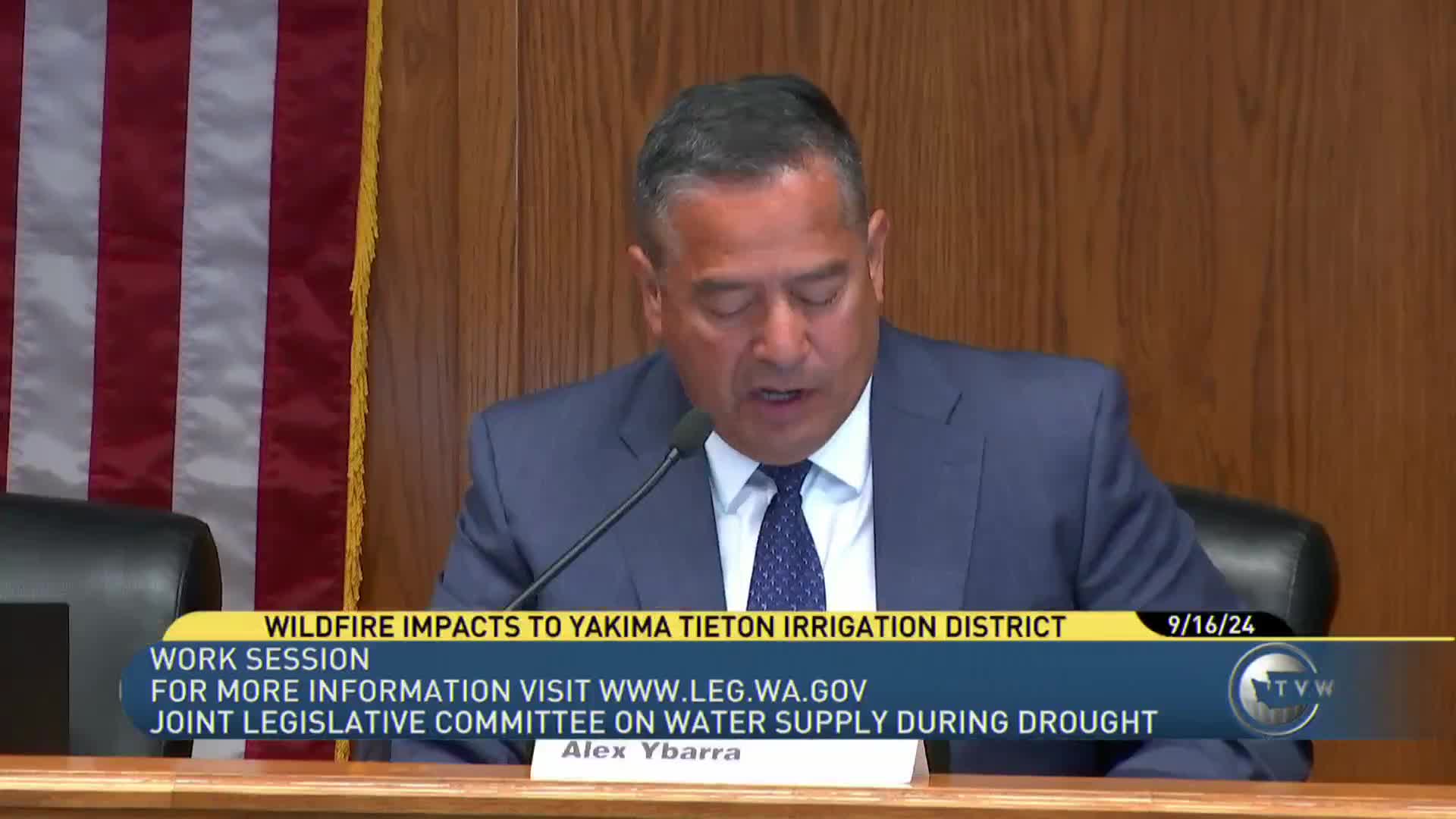Water Crisis Deepens as Drought Forces Emergency Measures
September 16, 2024 | Joint Legislative Committee on Water Supply During Drought, Joint, Work Groups & Task Forces, Legislative Sessions, Washington
This article was created by AI summarizing key points discussed. AI makes mistakes, so for full details and context, please refer to the video of the full meeting. Please report any errors so we can fix them. Report an error »

During a recent joint committee meeting, Bowen Kendrick, manager of Water and Wastewater Systems at PUD Number 1 of Clallam County, presented a comprehensive overview of the drought impacts affecting the region's water systems. Kendrick highlighted the challenges faced by the Island View and Clallam Bay CQ water systems, particularly the reliance on surface water sources that have been severely impacted by declining snowpack and reduced groundwater recharge.
Kendrick detailed the operational difficulties, noting that the Island View water system, which serves only 34 connections, has had to rely on trucking water from the Clallam Bay CQ system due to its surface water treatment plant being offline for extended periods. The Clallam Bay CQ system, with 449 active connections, has also faced similar challenges, particularly during the dry season when water levels in the Hocco River drop below critical thresholds.
To address these issues, Kendrick outlined a drought response plan that includes five stages of conservation measures, ranging from early notifications to mandatory restrictions on outdoor water use. The plan aims to manage water resources effectively and ensure public awareness during drought conditions.
Kendrick also discussed recent investments made possible by the Ecology's Emergency Drought Grant, which funded new equipment to enhance water hauling capabilities. This investment is expected to improve operational efficiency and safety, allowing for better management of water resources during critical periods.
In addition to immediate responses, Kendrick emphasized the importance of long-term strategies, such as managed aquifer recharge, to ensure the sustainability of groundwater resources. He noted the collaborative efforts underway in the Dungeness Basin to mitigate future water shortages and prevent the over-extraction of aquifers.
The meeting also featured insights from Megan Kernan, water policy section manager with the Washington Department of Fish and Wildlife, who reported that while this summer's drought had noticeable impacts, they were less severe compared to previous years. This perspective highlights the ongoing challenges and adaptive strategies being implemented across the region to manage water resources amid changing climate conditions.
The discussions underscored the critical need for continued investment in water infrastructure and sustainable practices to safeguard the region's water supply for the future.
Kendrick detailed the operational difficulties, noting that the Island View water system, which serves only 34 connections, has had to rely on trucking water from the Clallam Bay CQ system due to its surface water treatment plant being offline for extended periods. The Clallam Bay CQ system, with 449 active connections, has also faced similar challenges, particularly during the dry season when water levels in the Hocco River drop below critical thresholds.
To address these issues, Kendrick outlined a drought response plan that includes five stages of conservation measures, ranging from early notifications to mandatory restrictions on outdoor water use. The plan aims to manage water resources effectively and ensure public awareness during drought conditions.
Kendrick also discussed recent investments made possible by the Ecology's Emergency Drought Grant, which funded new equipment to enhance water hauling capabilities. This investment is expected to improve operational efficiency and safety, allowing for better management of water resources during critical periods.
In addition to immediate responses, Kendrick emphasized the importance of long-term strategies, such as managed aquifer recharge, to ensure the sustainability of groundwater resources. He noted the collaborative efforts underway in the Dungeness Basin to mitigate future water shortages and prevent the over-extraction of aquifers.
The meeting also featured insights from Megan Kernan, water policy section manager with the Washington Department of Fish and Wildlife, who reported that while this summer's drought had noticeable impacts, they were less severe compared to previous years. This perspective highlights the ongoing challenges and adaptive strategies being implemented across the region to manage water resources amid changing climate conditions.
The discussions underscored the critical need for continued investment in water infrastructure and sustainable practices to safeguard the region's water supply for the future.
View full meeting
This article is based on a recent meeting—watch the full video and explore the complete transcript for deeper insights into the discussion.
View full meeting
